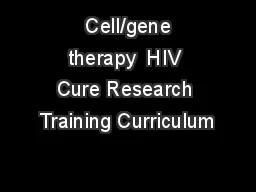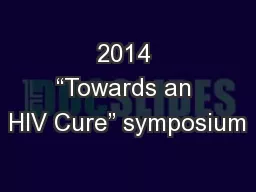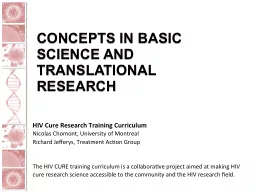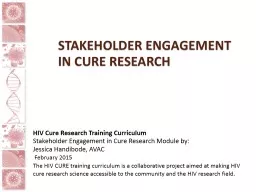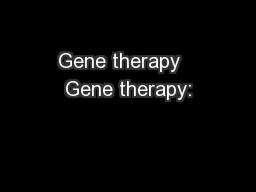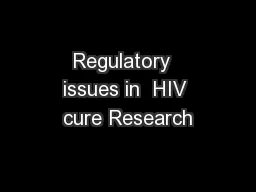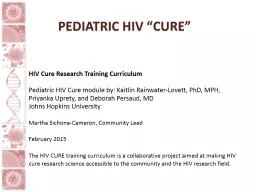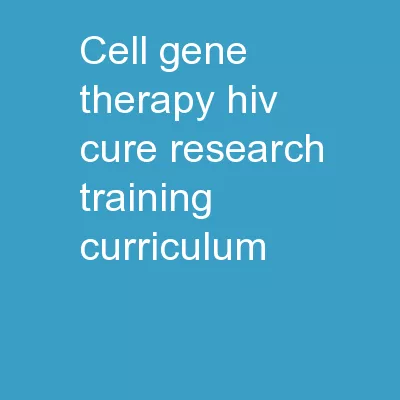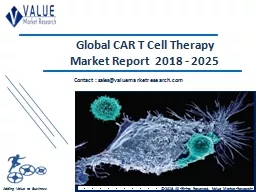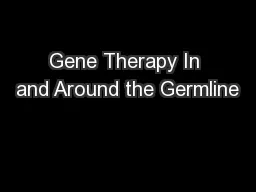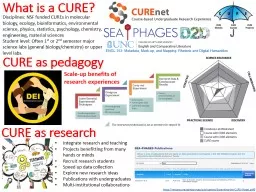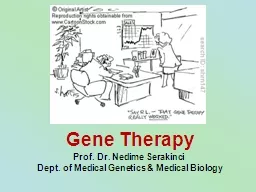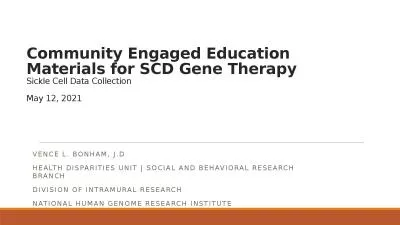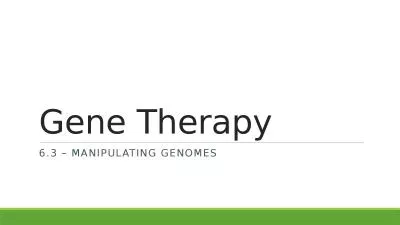PPT-Cell/gene therapy HIV Cure Research Training Curriculum
Author : test | Published Date : 2020-04-10
CellGene Therapy by Jeff Sheehy the California Institute for Regenerative Medicine CIRM Jerome Zack UCLA HansPeter Kiem The Fred Hutchinson Cancer Research Center
Presentation Embed Code
Download Presentation
Download Presentation The PPT/PDF document " Cell/gene therapy HIV Cure Research Tr..." is the property of its rightful owner. Permission is granted to download and print the materials on this website for personal, non-commercial use only, and to display it on your personal computer provided you do not modify the materials and that you retain all copyright notices contained in the materials. By downloading content from our website, you accept the terms of this agreement.
Cell/gene therapy HIV Cure Research Training Curriculum: Transcript
Download Rules Of Document
" Cell/gene therapy HIV Cure Research Training Curriculum"The content belongs to its owner. You may download and print it for personal use, without modification, and keep all copyright notices. By downloading, you agree to these terms.
Related Documents

